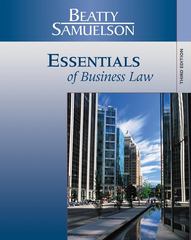Fisher Model and Recardian Equivalence
13. Consider the Fisher model of consumption with two time periods. Households care about consumption C, in the present and consumption C2 in the future. They each receive income Y in the present time period, but will be retired in the future period and then receive zero non-financial income. Households save by holding bonds that have real return r. Saving an amount S in the present means a house- hold will have financial wealth (1+ r)S in the future. Households have a diminishing marginal rate of substitution between present and future consumption, and both C, and C2 are normal goods. Assume everyone in the economy has the same preferences over consumption plans (Ct. C2)- (a) [4 marks] Assuming initially no taxes or transfers (so S = Y - C;), derive the life-time budget constraint and illustrate a household's optimal choice of consumption plan (C1. C2) in a diagram. Explain why the household chooses a positive value of saving S, interpretable as a private pension plan. Suppose the government decides to establish a public pension system. House holds are taxed an amount 7 in the present period to fund contributions to the pension system, and are paid a pension P in the future time period. The pension system is assumed to be fully funded in that pensions are paid from the proceeds of the pension system's investments in financial assets, and the public pension system does not have access to investments with better returns than the private sector. The budget constraint of the pension system is thus P = (1+r)T. (b) [4 marks] Derive the new life-time budget constraint faced by households. By combining this budget constraint with the pension-system budget constraint, show that if households are free to save or borrow at interest rate / subject to their life-time budget constraint then they are no better or worse off after the public pension system is established. (c) [3 marks] What happens to a household's consumption plan (C1, Cz) and pri- vate pension saving S = Y - T - C, after the system is established? Explain your findings as a special case of the Ricardian equivalence proposition. In the remainder of the question, suppose households do not have access to bor- rowing, so it is not possible to choose S M. This system is funded by a tax T in the current period on all households that is taken as given, but which satisfies the pension system's budget constraint. (e) [5 marks] Provide an example to show that this pension system can make people worse off because current consumption becomes too high. Explain intuitively the reason for the failure of Ricardian equivalence







